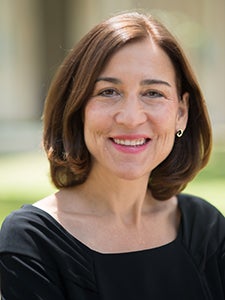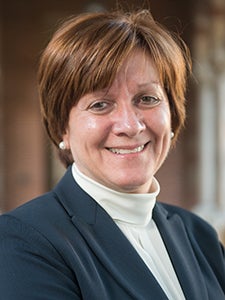
Under the microscope: Trump’s controversial travel ban
Chaos erupted at airports across the United States over the weekend as people with valid immigration documents were detained or deported after arriving on overseas flights. Other travelers found themselves stranded at airports outside the U.S. when they were denied boarding.
Those affected were from seven predominantly Muslim countries listed on an executive order signed by President Donald Trump on Jan. 27. The order placed an immediate ban on refugees and travelers from the seven listed countries entering the U.S. The White House said the move was necessary to secure America’s borders and protect its residents from potential terrorist threats.
The move drew sharp criticism from human and civil rights groups, and protests erupted in airports across the U.S. and worldwide, as people rallied against what many saw as discrimination against Muslims.
Here, three USC Dornsife scholars explore the ethical, political and constitutional significance of this controversial order.

Alison Dundes Renteln, professor of political science, anthropology, public policy and law
“This executive order is controversial because it is inconsistent with fundamental principles of constitutional law and international human rights; it permits discrimination. It violates equal protection and due process. It also may result in irreparable harm to those denied entry and violate humanitarian law. Federal judges have issued stays of the order because of the strong likelihood plaintiffs will prove these claims on the merits.
“The executive order is also incompatible with key provisions of the International Covenant on Civil and Political Rights, which says we’re obligated, as a party to that treaty, to support basic due process rights. So by implementing this executive order, we are violating the Constitution, as well as all kinds of international human rights provisions. Although international obligations may not be explicitly mentioned in public debate or by the courts, the stays issued by federal judges reflect these kinds of concerns.
“This country has long been a champion of human rights and liberty and justice for all. This executive order is a cruel, misguided policy that is incompatible with our basic values. Let’s hope our leaders reconsider this ill-conceived order. Regardless of what the elites do, it is quite clear that thousands of protesters will continue to call for adherence to basic human rights.”

Jeb Barnes, associate professor of political science
“What we are witnessing with all these executive orders is a kind of a stress test for the American system of checks and balances. Our system of government is not compartmentalized. It’s a system of separate institutions sharing power and it was designed so that if any one branch of government overreaches, the other branches are going to respond.
“What we’re seeing in the first week of the Trump administration is that the President’s executive orders have triggered responses: from states with respect to his sanctuary cities orders; from the courts with respect to his immigration orders; and from the civil service with respect to the firing of the Attorney General. I think the enduring question will be to what extent can this system of separate institutions sharing powers serve to check whatever excesses there are in any one branch, including the executive branch.
“In some ways, these executive orders are a continuation of prior practices. We should remember that President Obama was very aggressive in his use of executive orders with respect to issues with environmental and climate change policy in the shadow of what he perceived as a gridlocked Congress and an intransigent Republican opposition.
“The president is using executive powers to push the limit of existing laws, to push into the gray areas of law and force a reaction from the other branches. Again, seeing to what extent a conservative Supreme Court stands up for these constitutional principles or enables this [president] will be very interesting.”

Laurie Brand, Robert Grandford Wright Professor and professor of international relations and Middle East studies and director of the Middle East Studies Program
“The implications of this executive order are far reaching and extremely distressing, shocking even for those of us who took President Trump at his word when he talked during his campaign about introducing a Muslim ban.
“As others have commented, part of the problem is that this was announced so suddenly. I am very worried that this is not just an indication of poor planning of an extremely destructive policy, but that it may also be indicative of how this administration is going to continue to operate.
“The texts of some of these executive orders that have been issued over the last 10 days or so have not necessarily been made public. In some cases, I think these are symbolic/publicity events intended to please part of the Republican base and to make it look like the administration is moving forward extremely aggressively on all kinds of fronts. It’s unclear to me what each of these will do in terms of actually changing policy.
“I don’t know what the exact criteria are for the inclusion of these countries but certainly they are not the ones that have produced the people who have engaged in the most egregious terrorist acts against the U.S. in the form of 9/11.
“This ban certainly does nothing to improve our security. On the contrary, it is likely to contribute both to a worsening of regional relations, as well as to a potential worsening of our own security. That’s extremely worrying.”